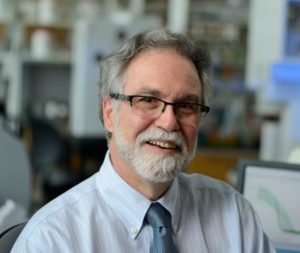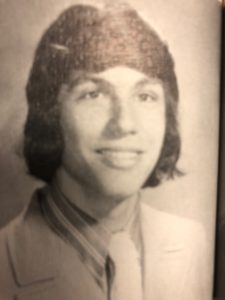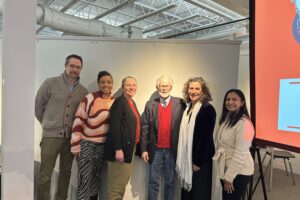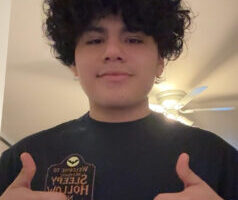
When 2019 Nobel Prize for Physiology and Medicine winner Gregg Semenza was a student at Sleepy Hollow High School, he wasn’t the top student in his 1974 graduating class – he remembered ranking fourth in the class, in fact– but he did find a subject he was passionate about. And that passion was fueled by his biology teacher, Rose Nelson.
“I was fortunate to have her for freshman biology and then again AP biology in my junior year,” said Semenza. “She was a real inspiration in that unlike many teachers she had a PhD and had done post-doctoral research training, so she had a real sense of what research was like. And when she presented material, she didn’t just present it as dry facts but rather as a description of discoveries that were made by particular scientists and how those discoveries came about. She really brought the subject to life and showed the excitement involved in scientific discovery.”
Upon graduation, Semenza went to Harvard where he majored in biology. That’s where he became interested in genetics. “In my junior year I was working at a genetics lab at the Children’s Hospital in Boston, in a lab that was working to map human genes on to different chromosomes,” noted Semenza. “As a result of that, I became interested in medical genetics and decided to get a PhD in genetics as well as an MD. I was fortunate enough to get into the MD/PhD program at Penn (University of Pennsylvania).”
After receiving his MD/PhD, Semenza went to Duke Hospital to do his pediatric residency and then on to Johns Hopkins where he did his post-doc fellowship in medical genetics. It was there that he started the project for which he, along with two colleagues, was awarded the Nobel Prize.
When asked by the River Journal to explain in layman’s terms his Nobel Prize-winning project, Semenza said, “It’s pretty simple. Every cell of your body needs oxygen all the time. So, think about the logistics of supplying oxygen on a continuous basis to 100 trillion cells. This is like a FedEx nightmare. But the body accomplishes that. The system we discovered is the mechanism by which that occurs. So, it simply insures there’s a match between supply and demand, between the delivery of oxygen to cells and the consumption of oxygen by the cells.” Semenza went on to explain that it’s pretty much the most fundamental physiological stimulus there is. “When you think what you can do without for the shortest amount of time, I tell people to hold their breath and get back to me later. It won’t be much later.”
Like his own experience with his high school teacher, Semenza believes the fact that Westchester students are more apt to excel in science than in other parts of the country (25 of the 300 Regeneron Science Talent Search competition were from Westchester) is the quality of our teachers. “It just shows the critical role teachers play and how they need to be supported much better.”

Thinking back to his time growing up in Tarrytown, Semenza’s life wasn’t consumed by science. “I played varsity soccer in my junior and senior years,” remembered Semenza. Whether soccer or science or something else, he stressed that whatever you are interested in, you should pursue with a passion. “The key is to find something you are interested in and delve into it deeply,” said Semenza. “So, one of the things I did, and I was encouraged to do it by my teacher—I was in a summer program that was sponsored by the National Science Foundation at what was then the Boyce Thompson Institute of Plant Research in Yonkers...I spent eight weeks in the summer participating in my first exposure to research. Those kind of experiences are really valuable and students should seek them out. It’s really important for students to be active in their exploration of what interests them. That’s the most important thing. To really get involved in an area and go beyond what’s presented in the courses.”
Semenza’s mother still lives in Tarrytown, and he still visits the area regularly. “It’s such a beautiful place and growing up there was just an idyllic environment. I was so fortunate to grow up there. It was a small–town atmosphere.” Semenza even noted that he was involved in the local newspaper business while growing up in the area. “I delivered the Tarrytown Daily News for two years every day when I was in junior high. That was really my first job.”
Although it seems like winning the Nobel Prize is the ultimate achievement, Semenza emphasized that the prize was never the goal. “The goal of our research is to understand the system and its role in health and disease. And to use that knowledge to develop new treatments for common human diseases like cancer and some blinding eye diseases. That’s what we’re really focused on now.” Semenza and his colleagues are also working to develop drugs that will allow cancer therapies to be more effective. There are several drugs currently in clinical trials based on their discovery, including one among 25,000 patients worldwide for a drug that stimulates red blood cell production in patients with kidney disease. He hopes a decision on whether that drug will be approved for use by patients will happen within the next year.
Although not the goal, Semenza admits winning the Nobel Prize does change your life. “Well, instead of my life being divided up into one–hour segments, it’s now divided into 15–minute segments,” Semenza said with a laugh. “I’ve obviously gotten a lot of recognition and been able to reconnect with people from Tarrytown which has been really nice. And my mother is a regular rock star in Tarrytown now!”






